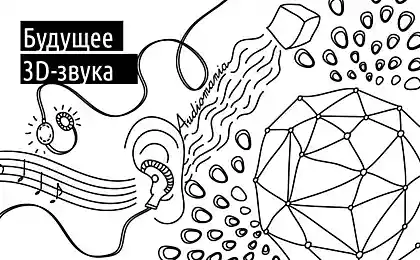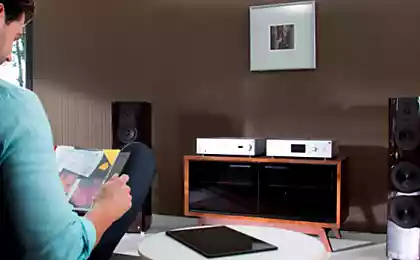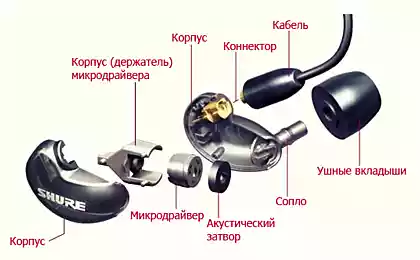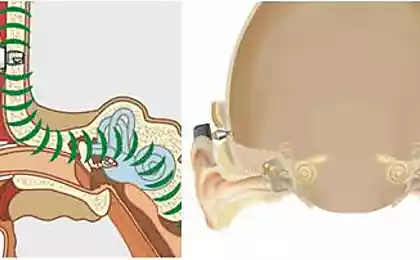704
10 incredible scientific and technical applications of sound

When we think about future technologies, we often do not notice a field in which there are incredible achievements: acoustics. Sound is proving to be one of the fundamental building blocks of the future. Science uses it to do incredible things, and you can be sure that in the future we will hear and see much more.
Cooling

A team of scientists from the University of Pennsylvania with the support of Ben and Jerry's has created a refrigerator that cools the food by sound. It is based on the principle that sound waves compress and expand the air around him that heats and cools it accordingly. As a rule, the sound waves changes temperature by no more than 1/10000 of a degree, but if the gas is pressurized to 10 atmospheres, the effects will be much stronger. The so-called thermoacoustic refrigerator compresses the gas in the cooling chamber and blows it with the 173 decibels of sound, generating heat. Inside the chamber, a series of metal plates on the way sound waves absorbs heat and returns it to the heat exchange system. Heat is removed, and the contents of the refrigerator is cooled.
This system was developed as a more environmentally friendly alternative to modern refrigerators. Unlike traditional models that use refrigerants chemical damage atmosphere thermoacoustic refrigerator works perfectly with inert gases such as helium. Since helium atmosphere just leave if it suddenly appears, the new technology will be greener any other on the market. The development of this technology, its designers hope that thermoacoustic model eventually bypass traditional refrigerators on all counts.
Ultrasonic welding
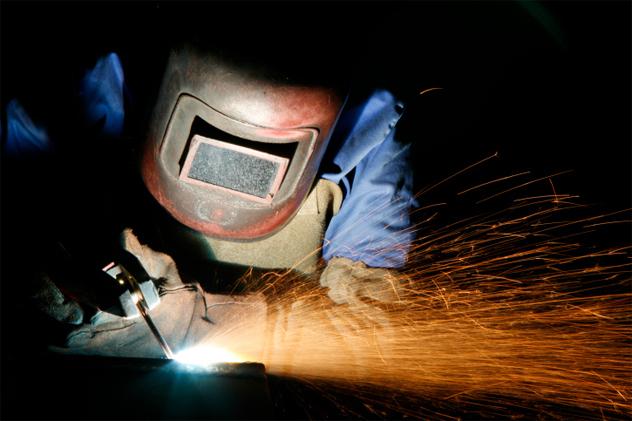
Ultrasonic waves are used for welding of plastics since the 1960-ies. The basis of this method is the compression of two thermoplastic materials on top of a special device. Through a bell then fed the ultrasonic waves, which cause vibrations in the molecules, which in turn leads to friction, generating heat. In the end, the two pieces are welded together firmly and uniformly.
Like many technologies, it was discovered by accident. Robert Soloff worked on the ultrasonic sealing technology and accidentally touched the tip of the dispenser Scotch on the table. In the end, the two parts of the dispenser soldered together, and Soloff realized that sound waves can bend around corners and sides of hard plastic, reaching the inner parts. After opening Soloff and his colleagues have developed and patented a method of ultrasonic welding.
Since then, ultrasonic welding has found wide application in many industries. From diapers to cars, this method is commonly used to join plastics. In recent years, even experimenting with ultrasonic welding seams on specialized clothing. Companies like Patagonia and Northface already using welds in their clothes, but only straight, and is very expensive. Currently, the most simple and universal method is still the manual sewing.
Theft of credit card information

Scientists have found a way to transfer data from computer to computer using just the sound. Unfortunately, this method also proved effective in the transmission of viruses.
Specialist security Ruiu Dragos came up with the idea after he noticed something strange with your MacBook Air: after installing OS X it computer spontaneously downloaded something else. It was a very powerful virus that could delete the data and make changes on their own. Even after removal, reinstallation and reconfiguration of the entire system the problem remained. The most plausible explanation for the immortality of the virus was such that he lived in the BIOS and remained there despite any operation. Another, less likely theory was that of the virus used high-frequency transmission between the speakers and microphone to control this.
This strange theory seemed unbelievable, but has been proven at least in terms of opportunities, when the German Institute has found a way to reproduce this effect. Based on the developed for underwater communications software scientists have developed a prototype malware that transfer data between an offline laptops using their speakers. In tests, the laptops can communicate at a distance up to 20 meters. The range can be expanded by linking the infected network device like a repeater Wi-Fi.
The good news is that the acoustic transfer is extremely slow, reaching a speed of 20 bits per second. Although this is not enough to transfer large data packets, it is enough to transmit information such as keystrokes, passwords, credit card numbers and encryption keys. Because modern viruses are able to do all this faster and better, it is unlikely that the new speaker system will be popular in the near future.
Acoustic scalpels
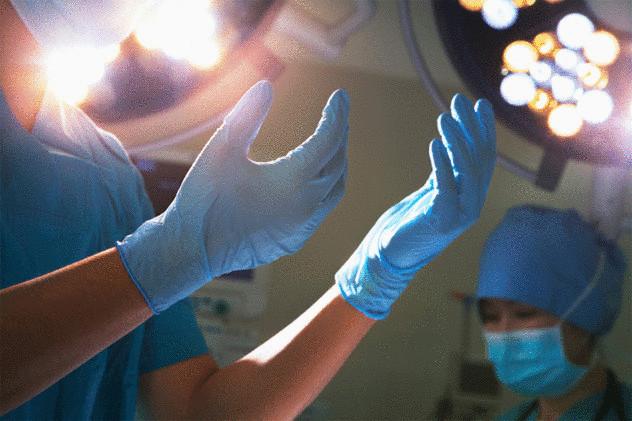
Doctors already use sound waves for medical procedures like ultrasound and destruction of kidney stones, but scientists at the University of Michigan have created an acoustic scalpel, the accuracy of which allows the separation of even one cell. Modern ultrasonic technologies allow to create a beam with the focus of a few millimeters, but the new tool is accurate as early as 75 to 400 micrometers.
The General technology has been known since the late 1800s, however, a new scalpel was made possible through the use of lenses, wrapped in carbon nanotubes and the material called polydimethylsiloxane, which converts light into sound waves of high pressure. When properly focused, the sound waves create shock waves and microbubbles that exert pressure on a microscopic level. Technology tested by separating a single ovarian cancer cell and drilling a 150-micrometer hole in an artificial kidney stone. The authors consider the technology that it can finally be used for drug delivery or removal of small cancer tumors or plaques. It can even be used for painless operations, such as the ultrasonic beam can avoid nerve cells.
Charging the phone voiceWith the help of nanotechnology, scientists are trying to extract energy from a variety of sources. One of these problems — a device that does not need to be recharged. Nokia even has patented a device that absorbs the energy of motion.
Since the sounds — this only compression and expansion of gases in the air, and hence the movement, it can become a viable energy source. Scientists are experimenting with charging of phone during use — until you call, for example. In 2011, scientists from Seoul took the nanorods of zinc oxide sandwiched between two electrodes to produce electricity from sound waves. This technology could produce 50 millivolts just from the noise of the machine. It's not enough to charge most electrical devices, but last year the London engineers decided to create a device that generates 5 volts — and this is already enough to recharge the phone.
While charging the phone with sounds could be good news for fans to chat, it can have a serious impact on the developing world. The same technology that ensured the existence of thermoacoustic refrigerator can be used to convert sound into electricity. Score-Stove is a stove and a refrigerator, which extracts energy in the process of cooking on biomass fuels for the production of small amounts of electricity, about 150 watts. It's not much, but enough to provide 1.3 billion people on Earth without access to electricity, energy.
To turn the human body into the microphoneScientists from Disney made a device that turns the human body into the microphone. Called "ishin-den-Shin," in honor of the Japanese expression that means communicating through an unspoken understanding, it allows anyone to transmit a recorded message by simply touching the ear of another person.
This device includes a microphone attached to the computer. When someone speaks into the microphone, the computer saves it as a record on repeat, which is then converted into a barely audible signal. This signal is transmitted by wire from the microphone to the body of anyone who holds it, and produces the modulated electrostatic field, which causes a tiny vibration if something the person concerned. Vibration can be heard, if a person touches another's ear. They can even be transmitted from person to person, if a group of people is in physical contact.
Spongiosa science creates something, what even James bond could only dream of. Scientists from mit, Microsoft and Adobe have developed an algorithm that can read passive sounds of inanimate objects in the video. Their algorithm analyzes imperceptible vibrations which create sound waves on surfaces and makes them audible. In one experiment failed to consider intelligible speech with a package of potato chips, lying at a distance of 4.5 meters per soundproof glass.
For best results, the algorithm requires that the number of frames per second video was higher than the frequency of the audio signal, which requires a high-speed camera. But, at worst, you can take an ordinary digital camera to determine, for example, the number of interlocutors in the room and their floor — perhaps even their identity. New technology has obvious applications in forensic, law enforcement and spy wars. With this technology, you can see what's happening outside the window, just got a digital camera.
Sound masking, Scientists have made a device that can hide objects from sound. It seems a strange pyramid full of holes, but its shape reflects the trajectory of sound as if it is reflected from a flat surface. If you put this acoustic masking of the object on a flat surface, it will be immune to the sound, regardless of the angle at which you will send sound.
Although perhaps this Cape and will not prevent eavesdropping, it can be useful in places where the object is to hide from the acoustic waves, such as a concert hall. On the other hand, the military already had their eye on this cryptic pyramid because it has the potential to hide objects from sonar, for example. Because underwater sound travels almost the same as the air, sound masking can make submarines invisible to detection.
Tractor beam
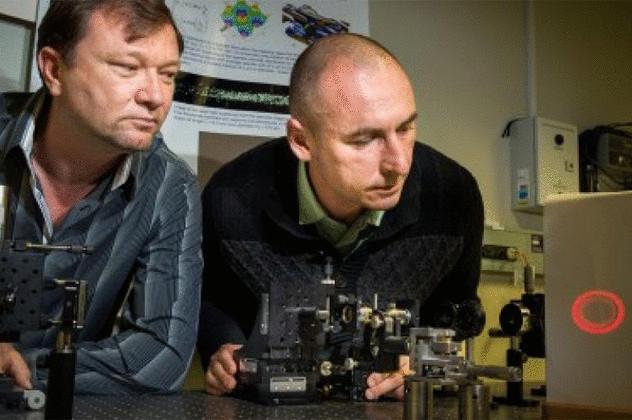
For years, scientists tried to bring to life the technology of Star trek, including tractor beam, with which you can capture and attract certain things. While quite a lot of research is focused on the optical beam, which uses the heat for moving objects, this technology is limited by the size of objects of a few millimeters. Ultrasonic tractor beams, however, proved that they can move large objects — up to 1 inch wide. Perhaps it is still small, but the new beam strength billions of times greater than the old developments.
Two focusing the ultrasonic beam on the target, the object can be pushed toward the beam source, dissipating the waves in the opposite direction (the object will be like to bounce on the waves). Although scientists have not yet managed to create the best kind of waves for its technology, they continue to work. In the future this technology can be used to directly control objects and fluids in the human body. For medicine, it can be invaluable. Unfortunately, in the vacuum of space sound is not covered, so perhaps the technology will be applied to control the spacecraft.
Tactile голограммы

Science is also working on the creation of other "Star trek" holodeck. Although the hologram technology is nothing new, currently available to us are not so clever it appears, as show fantastic movies. However, the most important feature that separates fiction from real hologram remain tactile sensations. Remained, to be exact. Engineers from the University of Bristol have developed a so-called UltraHaptics technology, which is able to transmit tactile sensations.
Initially, the technology was developed to provide power to your skin to facilitate gesture control certain devices. Mechanic with dirty hands, for example, could scroll through the manual. Technology was supposed to make touch screens a sense of the physical page.
Since this technology uses sound to produce vibrations that reproduce the sense of touch, the sensitivity level can be changed. A 4-Hertz vibration similar to the heavy rain and 125 Hertz resemble touching the foam. The only downside at the moment is the fact that these frequencies can be heard by dogs, but the designers say that it is fixable.
Now they modify their device for the production of virtual forms such as spheres and pyramids. However, this is not entirely virtual forms. At the heart of their work are sensors that follow your hand and thus form a sound wave. Currently, these objects do not have enough detail and some precision, but the designers say that once the technology will be compatible with the visible hologram, and the human brain will be able to put them in one picture.
Source: hi-news.ru
8 eco-friendly celebrities, which is subscribe in Twitter
As places with unfavourable natural conditions suitable for human activities?

